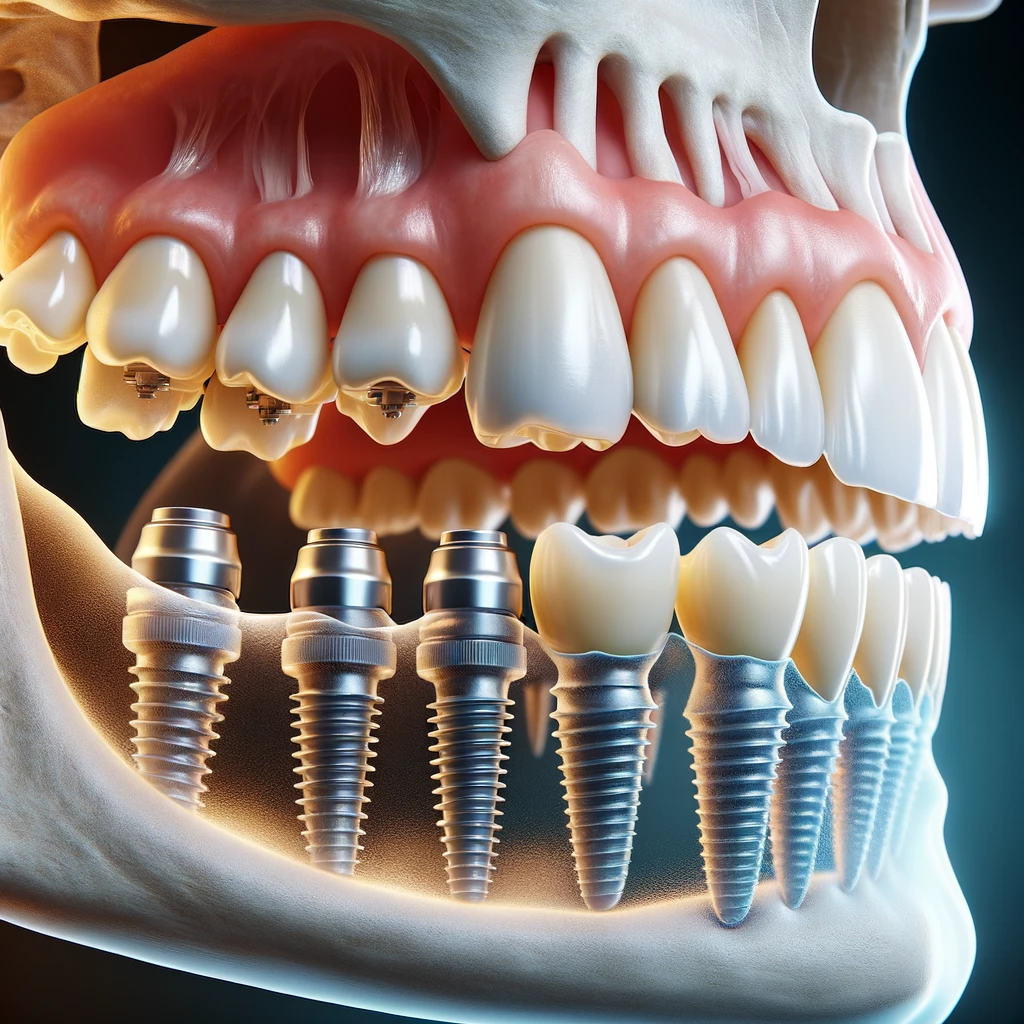The smart Trick of Dental Sense That Nobody is Discussing
The smart Trick of Dental Sense That Nobody is Discussing
Blog Article
The Greatest Guide To Dental Sense
Table of ContentsDental Sense - An OverviewMore About Dental SenseSome Of Dental SenseThe smart Trick of Dental Sense That Nobody is Discussing
are medical gadgets operatively dental implanted into the jaw to restore an individual's capability to chew or their appearance. They offer assistance for fabricated (phony) teeth, such as crowns, bridges, or dentures. When a tooth is shed because of injury or illness, an individual can experience complications such as rapid bone loss, faulty speech, or modifications to eating patterns that result in pain.Dental implant systems contain a dental implant body and dental implant abutment and might likewise consist of a joint addiction screw. Root canal procedure. The dental implant body is operatively put in the jawbone instead of the tooth's root. The oral implant joint is usually affixed to the implant body by the abutment fixation screw and prolongs with gum tissues right into the mouth to sustain the attached fabricated teeth
(https://disqus.com/by/dentalsense1/about/)Framework of The Dental Implant System picking oral implants, talk with your dental copyright about the possible benefits and threats, and whether you are a candidate for the procedure. Points to consider: Your overall wellness is an essential aspect in identifying whether you are a great candidate for oral implants, how long it will certainly take to heal, and for how long the dental implant might remain in place.
Smoking may impact the recovery process and lower the lasting success of the dental implant. The healing procedure for the dental implant body might take several months or longer, during which time you typically have a momentary joint instead of the tooth. the dental implant procedure: Very carefully adhere to the oral hygiene guidelines provided to you by your dental provider.
How Dental Sense can Save You Time, Stress, and Money.
Implant failing can lead to the need for another operation to deal with or change the dental implant system. Brings back the capability to chew Recovers aesthetic appearance Assists maintain the jawbone from reducing due to bone loss Maintains the health and wellness of the bordering bone and periodontals Helps keep surrounding (nearby) teeth stable Boosts top quality of life Damages to surrounding all-natural teeth throughout implant positioning Injury to the surrounding tissues during surgical treatment, such as sinus perforation Injury throughout surgical treatment (for instance, crack of bordering jawbone) Insufficient function, such as really feeling like the teeth do not attack together normally An experience that the tooth is loose or turning in area arising from an abutment screw loosening Implant body failing (looseness of the implant body) due to systemic infection, which may be most likely in individuals with unchecked diabetes mellitus as a result of local infection in bone and gum tissues supporting the dental implant body due to delayed recovery, which might be more most likely in patients who smoke Problem cleaning the periodontals around the dental implant, resulting in bad oral health Neglected gum illness Post-surgical feeling numb because of nerve impingement or damages Constantly inform wellness treatment carriers and imaging service technicians that you have oral implants prior to any kind of magnetic resonance imaging (MRI) or x-ray procedures.
FDA is not conscious of any negative occasions reported for MRI or x-ray procedures with oral implants. Oral implants systems are usually constructed from materials that comply with global consensus standards of the International Company for Standardization (ISO) or ASTM International. These criteria have information of what makes a secure product.

A dental implant is a structure that changes a missing tooth. With screw-like devices, the cosmetic surgeon inserts an implant into the jawbone, and it acts as a support for a fabricated tooth, called a crown.
The Best Guide To Dental Sense
Some individuals are not qualified for oral implant surgical procedure. It is for dental cosmetic surgeons to operate on people with: severe illnessuncontrollable metabolic diseasebone or soft tissue condition or infectionIf these concerns are settled, a person can have the surgical treatment. In, oral specialists avoid operating people with: If individuals with any one of the above undertake oral implant surgical treatment, there is a greater risk of the implant failing.

Oral implant surgical procedure is a tailored process. It's not the same for every person. The complying Go Here with provides a general review of what you can expect your dental practitioner, dental surgeon, periodontist or prosthodontist to do: Put the implant operatively. Provide you time to heal. Affix the post and final crown, bridge or denture.
Next off, your doctor will carefully put the oral implant right into your jaw. Your cosmetic surgeon will reposition your gums and shut the incision with stitches. If your dental implant is near the front of your mouth, your dentist will make a short-term tooth for you to put on until you heal. This way, you will not have a gap in your smile while you recover.
Fascination About Dental Sense
Throughout the healing stage, your jawbone must fuse to the oral implant. This procedure can take anywhere from three to nine months.
When your implant heals, your dental practitioner can affix the abutment (small port post) and your last repair (crown, bridge or denture). This generally takes about one hour to finish and may need a second small surgical procedure. You should not really feel any type of pain during your oral implant procedure since your service provider will make use of drug to numb your gum tissues.
Report this page